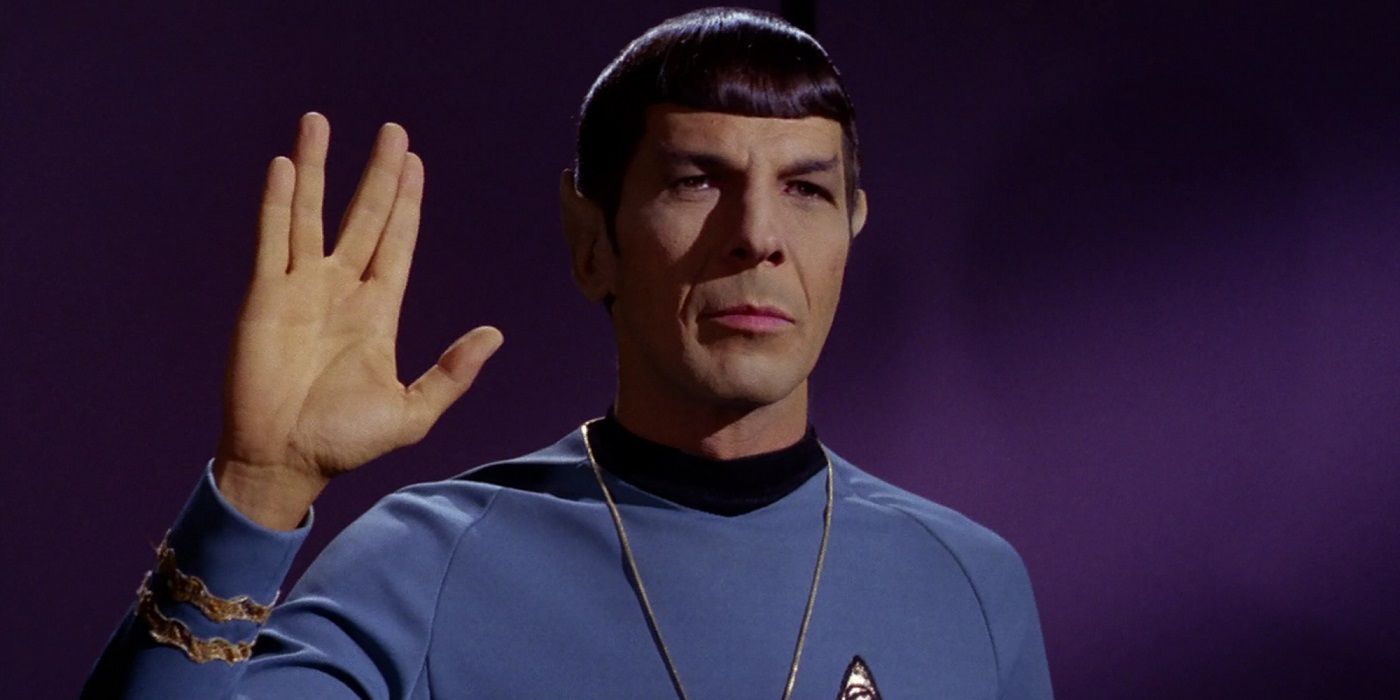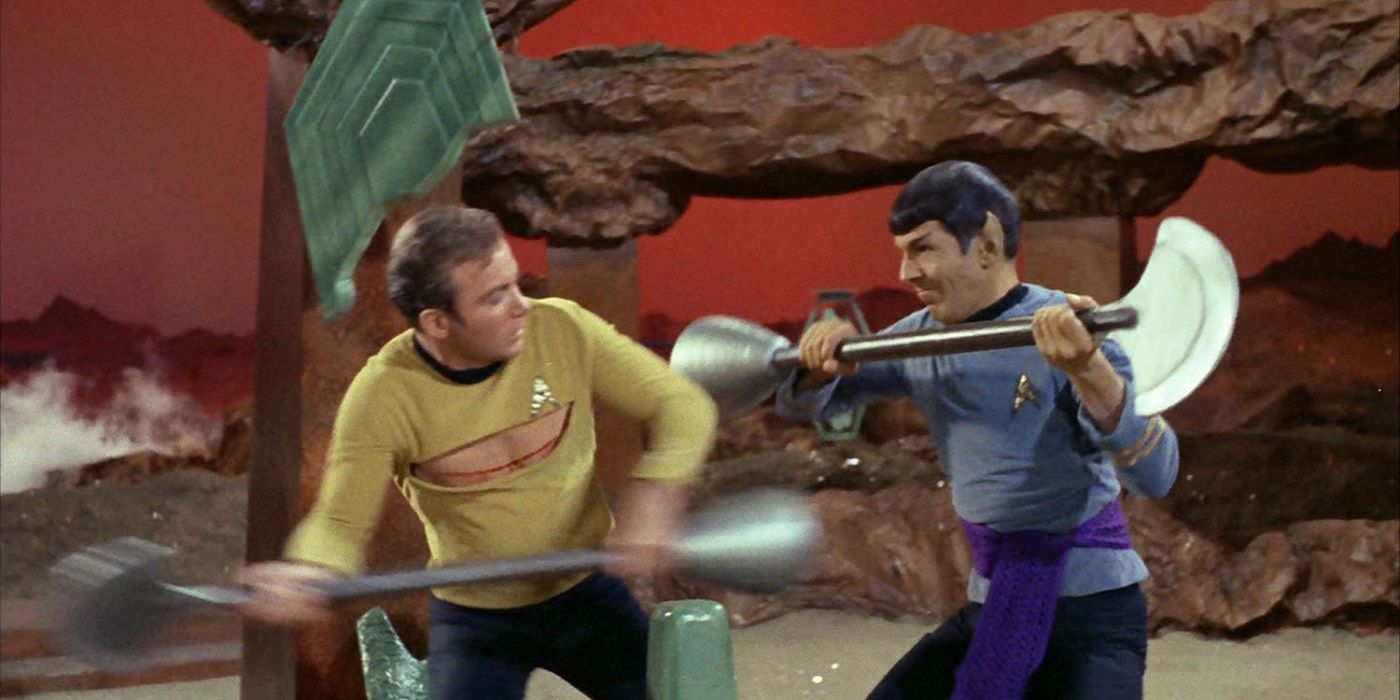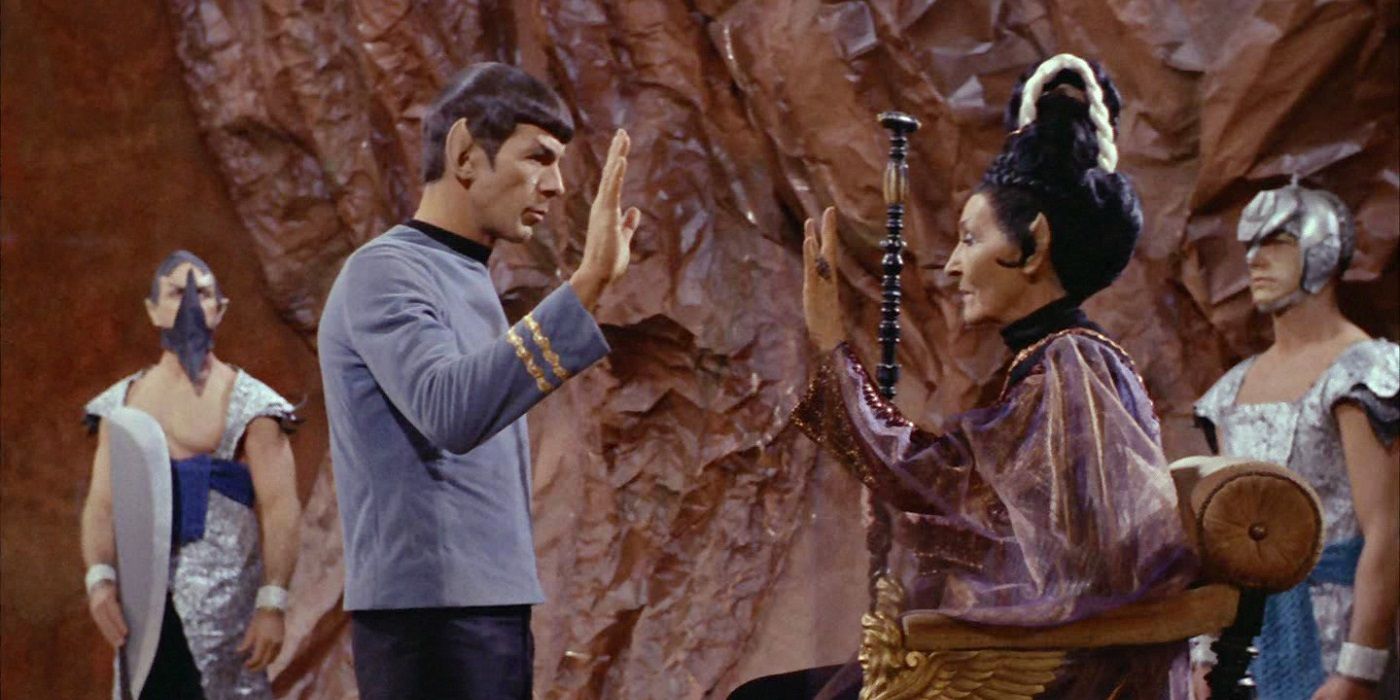Aside from the pointed ears, Mr. Spock's Vulcan salute may be his most iconic feature. The gesture has become synonymous with Star Trek, to the point where fans use it as a standard greeting and subsequent sci-fi efforts like Mork and Mindy satirized it. There are even plans to build a statue honoring the salute in Nimoy’s hometown of Boston. And yet, it was a late addition to the original series, and only came about because Leonard Nimoy had a moment of inspiration.
Nimoy first used the salute in Season 2, Episode 1, “Amok Time,” as a means to express greeting. It was conceived of on the spot during rehearsals, and while Gene Roddenberry subsequently attempted to claim credit for its invention, Nimoy has since recounted its origins in ancient Jewish tradition. He didn’t know that it was going to become a part of Star Trek when he used it, but considering its significance, the connection is quite fitting.
"Amok Time" Defined the Vulcans
“Amok Time” is widely cited as a foundational moment for the cultural development of the Vulcans. Spock is overcome by the effects of pon farr, and must return to his homeworld before it kills him. It was fans’ first opportunity to see Spock’s culture directly, and the character’s popularity turned many of its tropes into accepted Vulcan traits. According to Nimoy, he simply wished to use an appropriately alien hand gesture to greet T’Pau who, as a judge and official over the proceedings, merited proper respect.
The salute had no significance beyond the immediate needs of the scene, but its ease of use meant that Nimoy could repeat it as a kind of shorthand -- along with the trademark “live long and prosper” -- anytime it felt appropriate. Fans began to emulate it for the same reasons, and soon it became an essential part of Star Trek. Adding further intrigue was the fact that some people struggle to make the gesture, with slight mechanical differences in individual hands making it more difficult. In preparing to take on the role of Spock in J.J. Abrams' reboot, Zachary Quinto even confessed difficulty in making the salute, requiring practice for him to perfect it. That odd quirk lent the salute an instant mystique that played into Mr. Spock’s identity perfectly.
The Vulcan Salute Stems from a Jewish Ritual
The gesture itself comes from a blessing in the Jewish faith, made daily to the congregation. The Kohanim priests connect their thumbs and make the sign with both of their hands, which forms the Hebrew letter “shin”, the first letter used in a name for God. Its use as a blessing makes an ideal match for the Vulcans’ benevolence and wisdom and roots their overall spirituality in an actual religious tradition.
The particular circumstances under which Nimoy first saw the symbol bear mentioning as well. According to the actor's account on StarTrek.com, his father told him not to look as the priests conducted the blessing (the congregation should be contemplating God instead of watching the priests.) Nimoy says that he looked anyway, and saw the priests making the sign. It felt magical to him, and he learned how to do it because of his fascination with the gesture. Star Trek inadvertently amplified that fascination and made it a key component in one of the franchises’ most beloved species.



